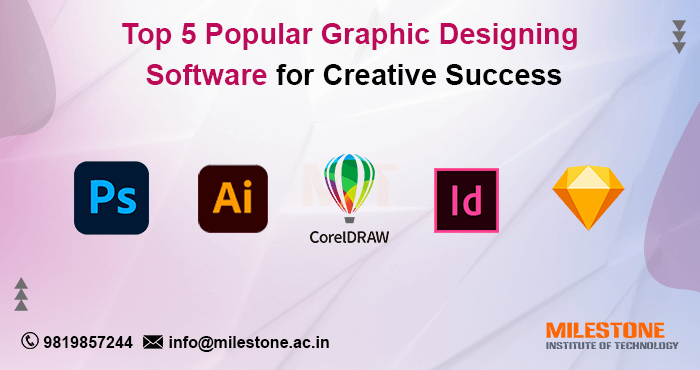ABCDou Insights
Exploring the world of news, trends, and information.
Design Software That Makes You Feel Like a Pro Without Breaking a Sweat
Discover design software that elevates your skills and boosts creativity effortlessly—unleash your inner pro with ease!
Top 5 User-Friendly Design Software That Will Make You Feel Like a Pro
If you're looking to elevate your design skills without the steep learning curve, you're in luck! Here are the Top 5 User-Friendly Design Software options that will make you feel like a pro. These tools combine intuitive interfaces with powerful features, allowing you to create stunning graphics, engaging presentations, and flawless web designs. Whether you're a beginner or an experienced designer, you'll appreciate how these programs streamline your workflow while unleashing your creativity.
- Canva - Ideal for creating social media graphics and presentations, Canva's drag-and-drop interface is incredibly user-friendly.
- Adobe Fresco - A favorite among illustrators, this app offers a natural drawing experience tailored for touch devices.
- InVision - Great for prototyping and collaboration, this platform allows teams to design and test together seamlessly.
- Sketch - Popular among UX/UI designers, Sketch provides powerful vector design tools while being easy to navigate.
- Figma - This web-based design tool enables real-time collaboration, making it perfect for team projects.
By choosing any of these platforms, you can boost your design prowess and create professional-quality work with ease. Explore their unique features and integrate them into your projects to see how they can transform your design experience!

How to Create Stunning Graphics with Minimal Effort: A Guide to Easy Design Tools
Creating eye-catching graphics doesn't have to be a daunting task. With the right tools, even beginners can produce stunning visuals that enhance their content. Start by utilizing Canva, a user-friendly graphic design platform that offers a plethora of templates for social media posts, presentations, and more. Simply choose a template that resonates with your brand, customize it with your images and text, and you’re all set! Remember, less is often more; focus on clean designs that draw in your audience without overwhelming them.
In addition to Canva, consider exploring Adobe Express for quick and easy graphic creation. This tool boasts a range of features that allow you to create stunning graphics with minimal effort. Whether you’re designing an infographic or a promotional poster, you can take advantage of pre-made assets and drag-and-drop functionality. Emphasizing the importance of simplicity, make sure to limit your color palette and use strong contrasts to make your visuals pop, ensuring they capture attention instantly.
Ever Wondered Which Design Software Is Right for You? Here's What You Need to Know
Choosing the right design software can be a daunting task, especially with the myriad of options available in today’s market. Whether you're a graphic designer, an aspiring web developer, or a hobbyist looking to explore your creative side, it's crucial to understand your specific needs before diving in. Factors to consider include your skill level, the types of projects you intend to create, and your preferred design style. For instance, if you're leaning towards vector graphics, software like Adobe Illustrator might be the way to go, while if you are more focused on photo editing, Adobe Photoshop is a well-established choice.
Moreover, you might want to explore free alternatives if you're just getting started. Programs such as GIMP and Canva provide excellent functionality without the hefty price tag. Assess your workflow and the specific features you require, such as collaboration tools or cloud storage options. To help you make your decision, consider visiting resources like PCMag's guide to design software, which breaks down the best options tailored to various needs.